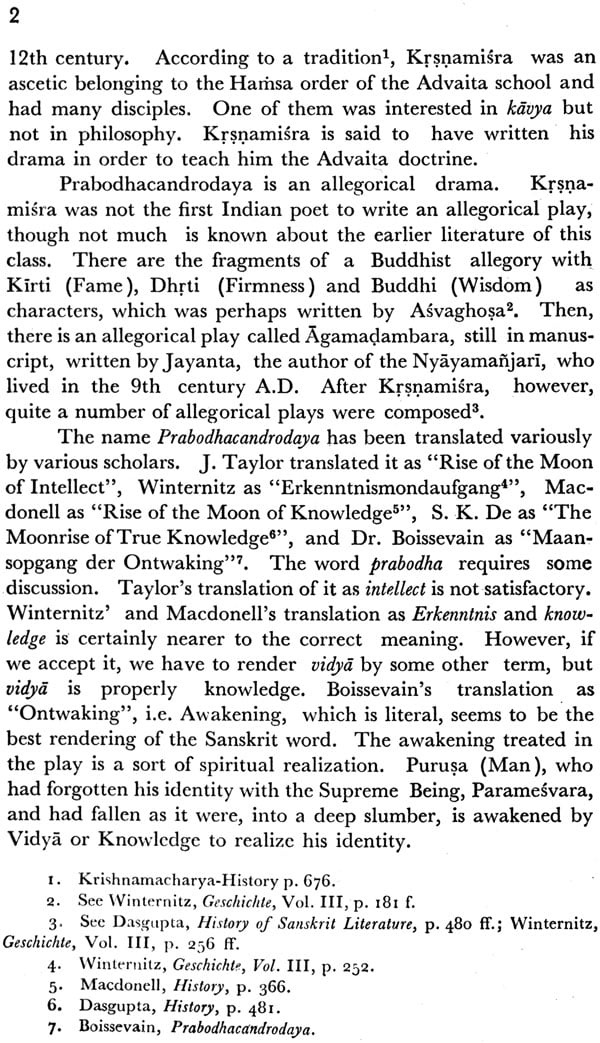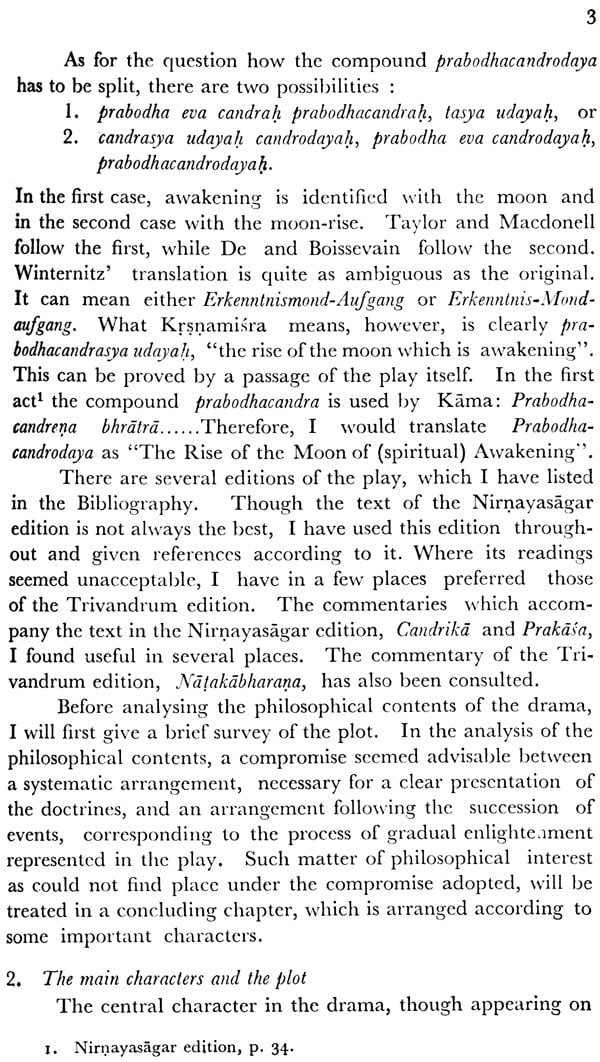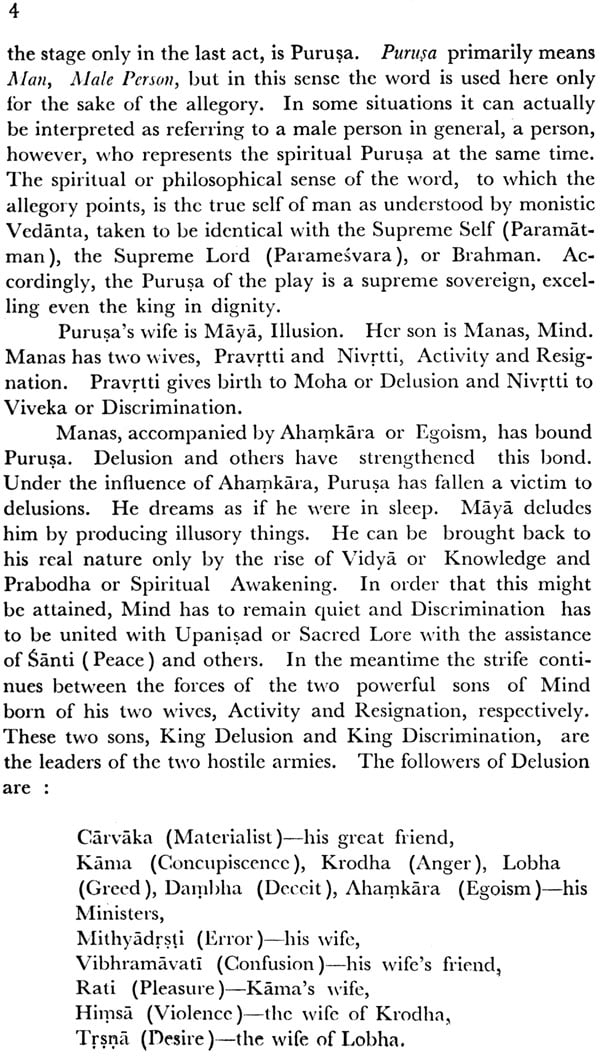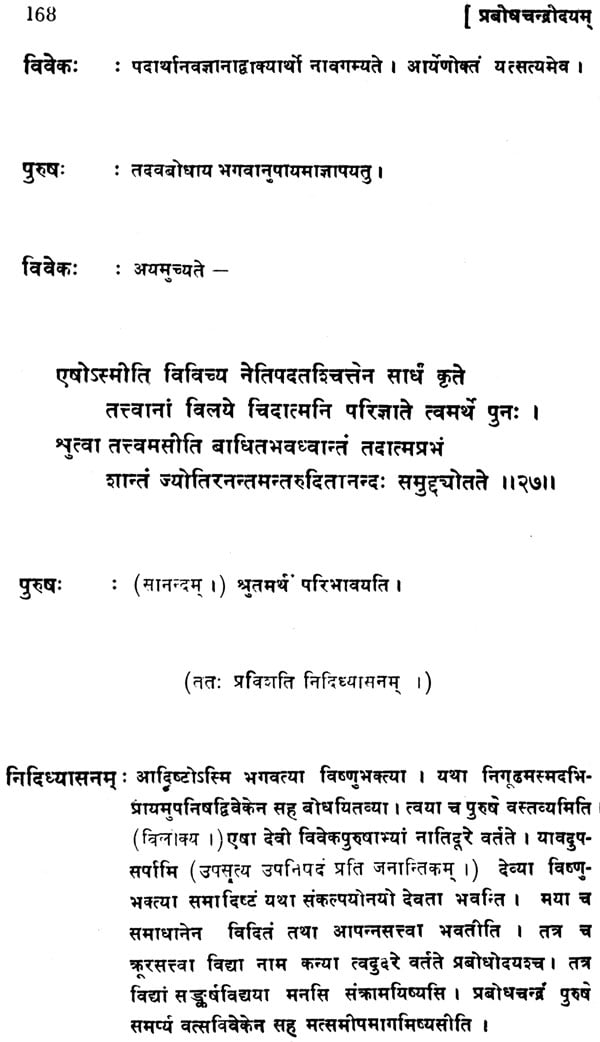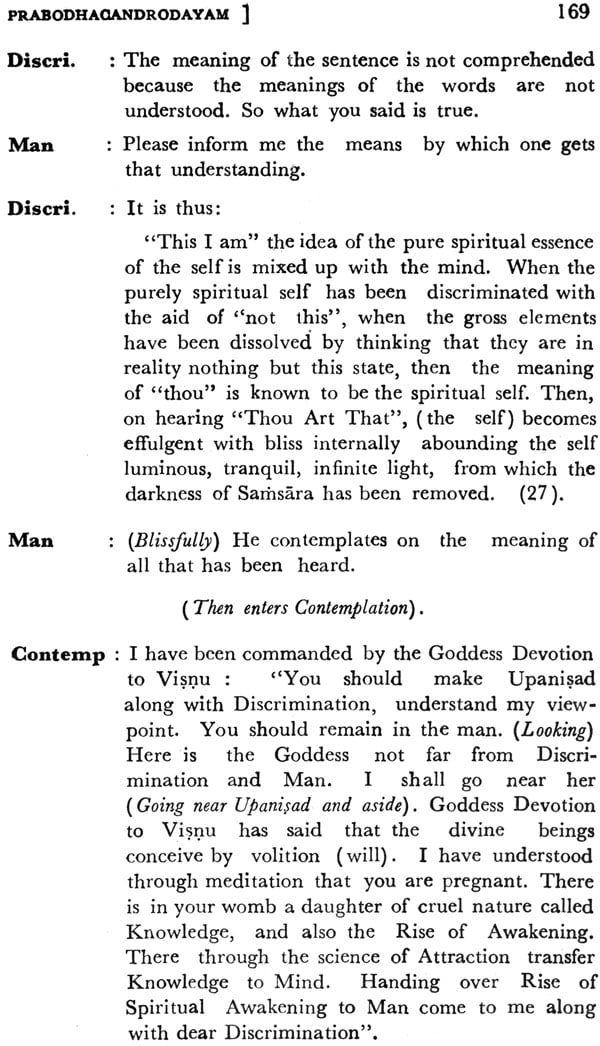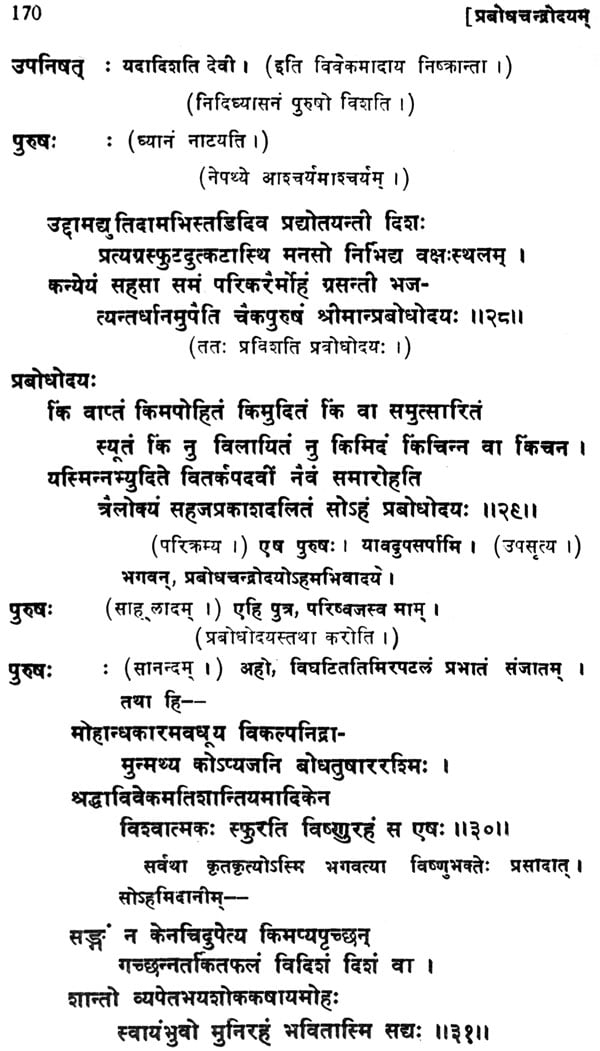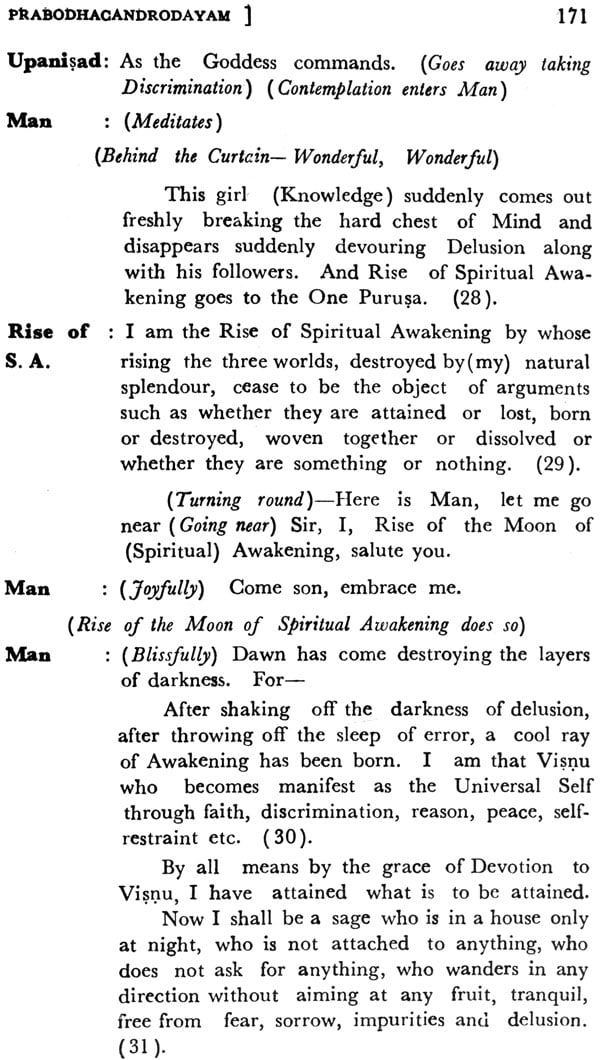
Prabodhacandrodaya of Krsna Misra
Book Specification
| Item Code: | IDJ358 |
| Author: | Dr. Sita K. Nambiar |
| Publisher: | MOTILAL BANARSIDASS PUBLISHERS PVT. LTD. |
| Language: | Sanskrit Text With English Translation |
| Edition: | 2012 |
| ISBN: | 9788120815186 |
| Pages: | 244 |
| Cover: | Paperback |
| Other Details | 9.0 inch X 6.0 inch |
| Weight | 320 gm |
Book Description
From the Jacket
Prabodhacandrodaya of Krsna Misra is a profound philosophical allegory, in six acts, of the whole life of man. The author succeeds to a remarkable degree in giving us an ingenious picture of the spiritual struggle between virtue and vice, the two forces of human mind in a dramatic form. There is lively satire too. On the devotional side there is an attempt to synthesise Advaitic Vedanta with Visnubhakti. Of all the allegorical plays in Sanskrit this must be singled out as an attractive work of real merit.
The introduction in this book forms a part of the thesis submitted by the translator for a Ph.D. degree in the University of Bonn. While translating the text an attempt has been made to keep close to the original and to preserve the spirit of the text without violating the English expression.
About the Author
Dr.(Mrs.) Sita K. Nambiar, Retired Principal of Daulat Ram College of Delhi University, completed her M.A. (Sanskrit) from Kerala University in 1946 and was a Gold Medalist. Dr. Nambiar was a scholar of the Deutsche Akademische Austausch Dienst (DAAD) and subsequently received her Ph.D. from Bonn University in 1960. Dr. Nambiar's contributions were acknowledged in 1991 when she received an award for promoting Sanskrit Studies given by the Sanskrit Academy, Delhi Administration.
Dr. Nambiar's work includes a dictionary of common words in Malayalam and Hindi compiled for the Government of India and a number of articles written on Indian religion and philosophy. Her latest publication, The Ritual Art of Teyyam and Bhutaradhane, was released in 1996 by the Indira Gandhi National Center for the Arts.
Preface
When I was working for my thesis 'Prabodhacandrodaya'- A philosophical and Theological analysis under Prof. Paul Hacker at the university of Bonn, the only English translation of the drama available was that of J. Taylor published in 1898. I found this translation rather inadequate and began to toy with the idea of bringing out another translation. The idea could not materialize until sometime later when I returned home and tried to get my thesis published.
While in Delhi I approached Messrs Motilal Banarsidass, the Veteran publisher of Oriental Studies. Shri Sunder Lal Jain, the leading proprietor of the firm, agreed to publish the work but suggested that I should render the play into English and prefix my thesis as introduction to the text and translation. I welcomed the suggestion, undertook and completed the task within the shortest time possible.
The translation is based on the fairly reliable Sanskrit text published by Panduranga Javaji, Nirnayasagar Press, Bombay, 1935. But at certain places the text is defective and as a result it defies attempts for the correct translation. But such occasions are few and far between. In general I have kept close to the original and tried to preserve the spirit of the text without violating the English expression.
This stupendous task could not have been completed without the inspiring cooperation of Shri Sundarlal Jain. He, therefore, deserves my hearty thanks. I am also beholden to my friend and colleague Dr. (miss) Sheila Uttam Singh for her valuable suggestions. I owe special thanks to my young friend and colleague Mrs. Ranga Kapoor for going through the manuscript. I am specially grateful to Pandit Jagdishlal Shastri for correcting the proofs so thoroughly.
Finally, I avail of this opportunity to state that I shall welcome any critical suggestion and advice for improvement and he glad to utilize the same in the next edition of this work.
| Preface | v | |
| Publisher's Note to Second Edition | vi | |
| ChapterI: | General | 1 |
| 1. | The Author and His Play | 1 |
| 2. | The Main Characters and the Plot | 3 |
| 3. | List of the Characters | 7 |
| 4. | Genealogy | 10 |
| ChapterII: | The Vaisnava Vedanta | |
| 1. | Purusa and Maya | 11 |
| 2. | Mind and its Activity | 16 |
| 3. | Moral Preparation | 18 |
| 4. | Anti-Vedic Doctrines Warded Off | 20 |
| 5. | The Rise of Dispassionateness | 21 |
| 6. | The Problem of Ritualism | 25 |
| 7. | The Temptation of Yogic Powers | 25 |
| 8. | Non-Vedantic System Discarded | 26 |
| 9. | The Teaching of Illusionism | 32 |
| 10. | The Realization of Monism | 33 |
| ChapterIII: | Other Vedic Schools and Sects | 36 |
| ChapterIV: | Non-Vedic Schools | 42 |
| 1. | The Carvaka or Lokayata | 42 |
| 2. | The Jaina | 44 |
| 3. | The Buddhist | 46 |
| 4. | The Kapalika | |
| ChapterV: | Supplementary Remarks on some characters | 52 |
| 1. | Purusa | 52 |
| 2. | Discrimination, Reasoning and Upanisad | 52 |
| 3. | Faith, Peace and Upanisad | 53 |
| 4. | Devotion to Visnu | 56 |
| 5. | Delusion, Error and Confusion | 57 |
| 6. | Concupiscence, Pleasure and Investigation into Truth | 58 |
| Abbreviations and Bibliography | 59 | |
| Text with English Translation | 1-173 | |
| Index of Verses occurring in the play | 175 |

